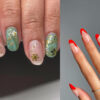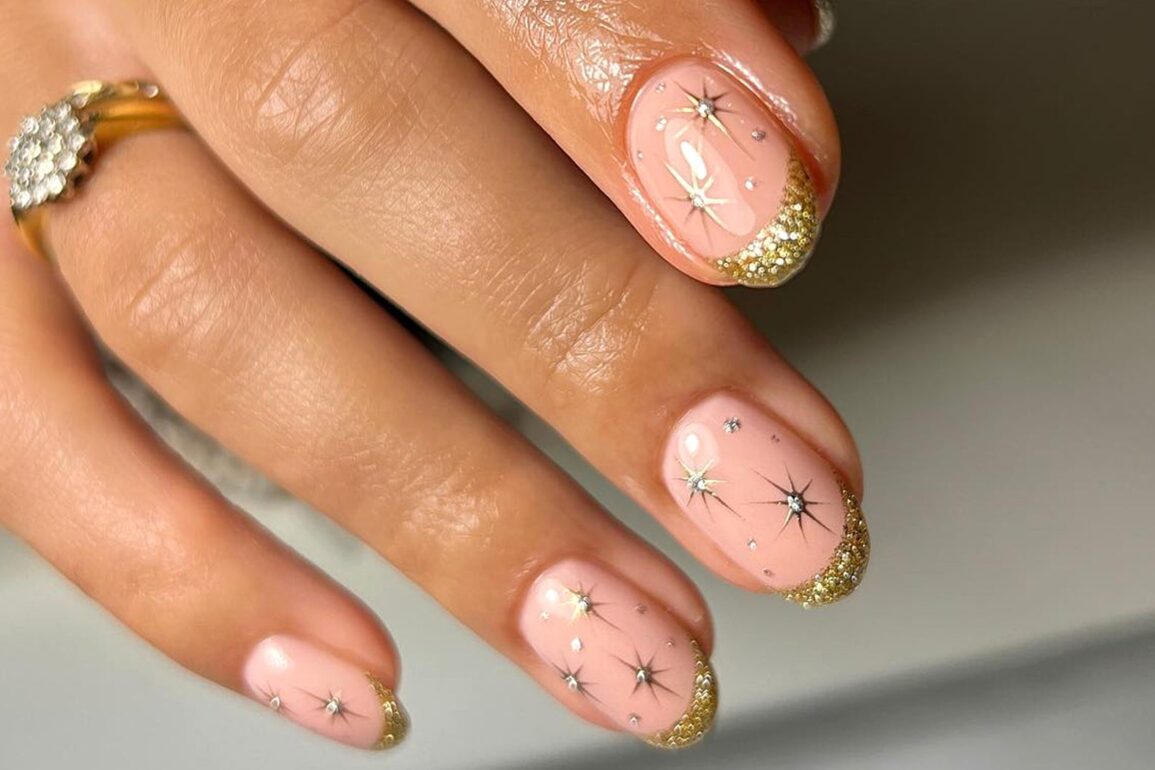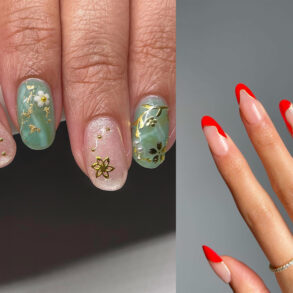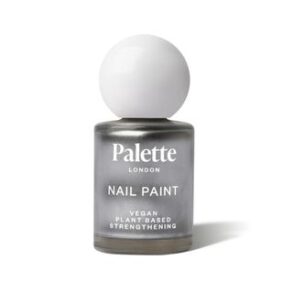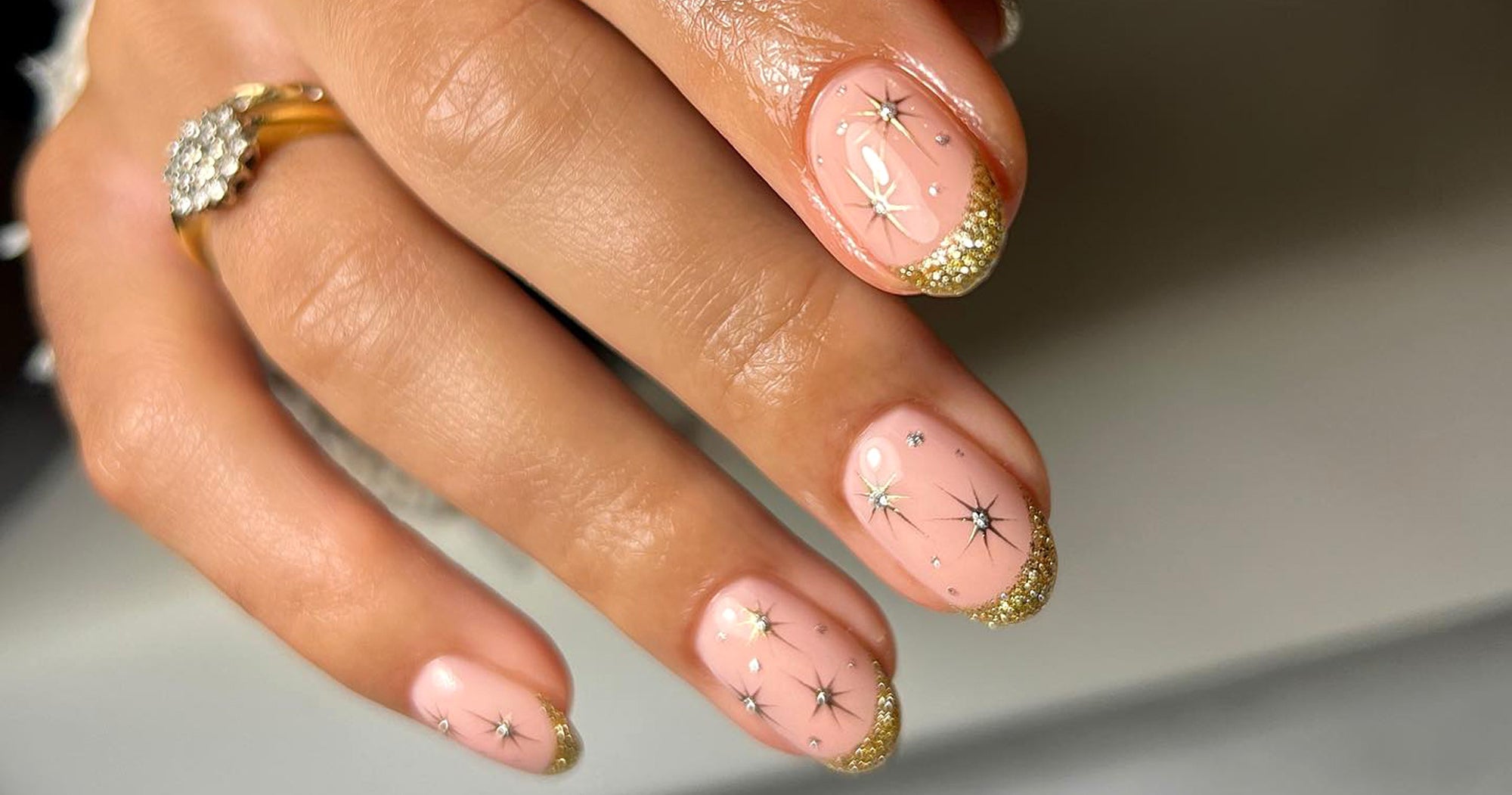
In the ever-changing world of beauty trends, nothing moves faster than nails. Whether it’s a buzzy name for a cool colour (think: milk bath nails), a certain finish that’s dominating everyone’s manicures (like velvet nails) or a fresh new nail art style, our obsession with it all means that the techniques used in salons are always evolving to keep up. And the latest nail movement to step into the spotlight is gel overlay nails.
Making waves on TikTok, this technique is like a glossy suit of armour, and is touted by nail experts as a great way to protect your natural nails. So why exactly is it taking off right now and what does the process actually involve? We spoke to session manicurist Ami Streets to bring you the lowdown on everything you need to know about gel overlay nails ahead of your next trip to the salon.
What are gel overlay nails?
Simply put, gel overlay is a technique used to create a resilient, natural-looking finish for nails. “It involves applying a gel product directly onto your natural nails to add strength,” explains Streets. Perfect if your nails are weak or prone to breakage, gel overlays offer extra durability and give support to natural nails while smoothing over any irregularities or texture in the nail, like ridges or bumps. Gel overlays are usually clear or nude. “They also create the perfect base layer for nail art or polish,” says Streets. Crucially, though, gel overlays don’t add length to your nail, so if that’s what you’re after, then nail extensions enlisting acrylic or builder in a bottle (BIAB) would be a better choice.
What are the benefits of gel overlays?
The main appeal of gel overlay nails lies in their protective nature. “They’re ideal for those looking for a long-lasting service that can add strength and support to weak and brittle nails,” says Streets. “Regularly using a building product helps with nail growth by supporting, reinforcing and strengthening, enabling your natural nails to be able to withstand wear and tear with a protective layer over them.”
Plus, if you love a colour-block manicure or more intricate nail art, then gel overlays lend a perfected foundation for your manicure. “It can be used to camouflage broken or chipped nails and provide a perfectly smooth base for gel or regular colour polish application,” says Streets.
What’s the difference between gel overlays, traditional gel nails and BIAB nails?
There aren’t stark differences between these three nail techniques — but they are there. The difference between gel overlays and traditional gel nails lies mainly in the texture, and the fact that gel overlays don’t add colour to the nail.
“Gel overlay nails are created by using a gel-based product or a traditional pot-based gel like BioSculpture with a thicker consistency than traditional gel colour polishes like Shellac,” explains Streets. “It’s applied directly onto natural nails and typically offers a longer wear-time than traditional colour gels, alongside reinforcing the strength, structure and shape of the nail.”
When it comes to the difference between gel overlays and BIAB, there are lots of similarities. In fact, the thicker texture of BIAB means that you could use it as a gel overlay underneath a nail colour of your choice. But while a variety of gel products can be used as a protective layer, BIAB is a specific type known for its dual functionality as a builder gel as well as a base gel, says Streets. In short, BIAB can be used to add length to your natural nail by creating a tip, whereas gel overlays don’t extend the nail — they just strengthen and protect what’s already there.
@nailsbylaureno If you struggle with gel overlay aka biab manicure application, here’s an easy way to master it. Practice and patience goes a long way and finding the best product for you is very important. I LOVE @nailthoughts @Kokoist USA clear base gel, it self levels easily. My number one tip is not to play with the gel too much, let it do the work for you. #geloverlay #biab #nailtips #gelx #nailtutorial ♬ Warm Nights – LAKEY INSPIRED
How long do gel overlays last?
While gel overlays can last up to three weeks, Streets recommends thinking of this as a maximum timeframe. This is because a more regular maintenance routine will see better long-term results for the strength and health of your nails underneath.
“There are different factors, like whether your natural nails are weak or brittle, which can sometimes affect the adhesion of the gel overlays and make them more prone to lifting,” says Streets. “Then there’s the rate of your natural nail growth,” she says. Street drives home the benefits of looking after your gel overlays with a daily cuticle oil to boost hydration and subsequently improve the lifespan of your manicure. R29 rates Jessica Phenomen Oil Intensive Moisturiser, £16.50, Leighton Denny Renovate Cuticle Oil For Dry Cuticles, £14, and Mii Nourish + Nurture Nail & Cuticle Oil, £12.40.
Are there any downsides to gel overlay nails?
As with all gel-based manicures, there is always a small window of risk. Streets recommends avoiding gel overlays entirely if you have highly sensitive skin or nails, or if there are any signs of infection or major damage which could be exacerbated by the application of gel products.
That aside? “There’s always a small chance of skin irritation due to the ingredients used in gel formulas, and poor removal practices like over-buffing, filing, or scraping the gel away can cause thinning, brittle or dehydrated nails,” says Streets. That’s why it’s always worth doing your research into nail salons you’re interested in, particularly reading through the reviews if it’s your first time.
How much do gel overlays cost?
Lastly, the cost of nails is dependent on where you live. You can always expect to pay more in big cities — especially in London. “Gel overlay manicures are slightly more expensive than traditional polish or gel colour services,” says Streets, “but the price reflects the application time for sculpting, refining the product and the increased durability that you can expect from this type of manicure.” We’d say that you can expect to pay around £50 for the service, but any additional nail colours or nail art might set you back more.
At Refinery29, we’re here to help you navigate this overwhelming world of stuff. All of our market picks are independently selected and curated by the editorial team. If you buy something we link to on our site, Refinery29 may earn commission.
This post was originally published on this site be sure to check out more of their content.


